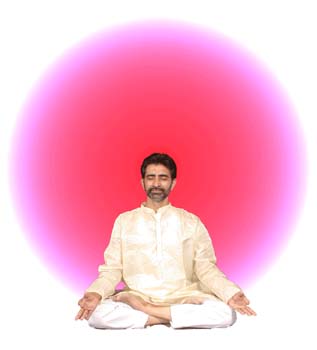| YOGA
AND LIFE

Yoga
is derived from the Sanskrit word “YUJ” meaning to bind the Yoke.
It is true union of our will with the will of God.
The
main Aim of Yoga is to unite the individual soul, body and mind
in order to attain the utmost peace of mind.
Our
ancient sages Kapila Maharshi & Patanjali suggested 8 stages
of Yoga to secure purity of body, mind and soul and final communion
with God. They are as follows :
1. Yama : Social Control or social discipline.
It contains 5 moral practices.
a)
Non-Violence : Ahimsa - not to hurt any creature mentally
or physically through mind, speech or action.
b)
Truthfulness : Satya - It is the presentation of the matter as
perceived with the help of sense organs.
c)
Non-stealing : Asteya - means not to covet and acquire physically,
mentally or by speech other’s possessions.
d)
Celibacy : Brahmacharya - It does not mean life long celibacy,
but moderation in sex between married couples.
e)
Non-acquisitiveness : ‘Aparigraha’ means abandoning wealth and
means of sensual pleasures.
2. Niyama : “Self discipline” - There
are 5 rules of conduct for self discipline. They are as
follows.
a)
Cleanliness : “Shaucha” - means Internal and external purification
of the body and the mind.
b)
Contentment : Santosha : It is a state of mind by which one lives
happily and satisfied in congenial or uncongenial atmosphere.
c)
Austerity or Penace : Tapas - It is the conquest of all desires
or sensual pleasures by practising purity in thought, speech and
action.
d)
Self Study : Svadhyaya - Exchange of thoughts in order to secure
purify in thought and accomplish knowledge.
e)
Surrender to God : Ishvara Pranidhana - It consists of pure devotion
to God and surrender of all actions to Him.
3. Asana : Body Control - Asana means
holding the body in a particular posture to bring stability to
the body and poise to the mind. The systematic practice
of Yogasana provides both body and mind controle in order to attain
sadhana or perfection of life.
4. Pranayama : Breath Control : It is
to stimulate, regulate and harmonize vital energy of the body.
Just as bath is required for purifying the body, Pranayama
is required for purifying the mind.
5. Pratyahara : Discipline of the Senses
- The extroversion of the sense organs due to their hankering
after worldly objects has to be restrained and directed inwards
towards the source of all existence.
6. Dharana : Concentration : Inner obstraction
- (i.e.,) Mind Control - One can set his mind for meditation and
by the regular practice of controlling the mind
7. Dhyana : Meditation : When one maintains
the focus of attention through dharana unbound by time and space,
It becomes Dhyana. It gives the real meaning of human life.
8. Samadhi : Self realisation - Samadhi
is the climax of Dhyana, Supreme happiness, Free from pleasure,
pain or misery is experienced. The meditator, the act of
meditation and the object meditated upon all the three shed their
individual characteristics and merge with one single vision of
the entire cosmos.
In
Ashtanga Yoga - the first five stages constitute the external
Yoga. The group of Dharana, Dhyana and Samadhi is called
Samyama - the internal Yoga.
In Yogasastra, Yoga has been classified
into Four categories. They are :
1. Bhakti
Yoga
2. Karma
Yoga
3. Jnana
Yoga
4. Hatha
Yoga
It
is yoga that systematizes the body and mind by renouncing all
the materialistic ambitions. |

